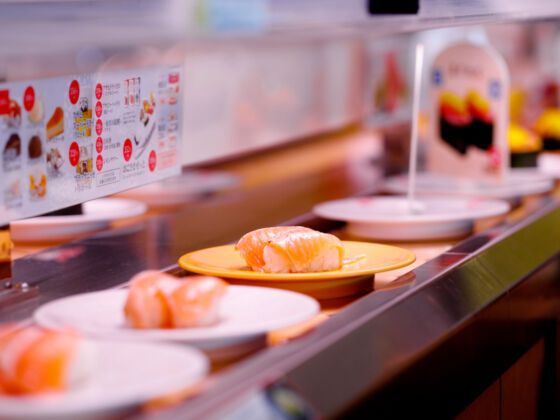If sushi restaurants were a family, 回転寿司 (kaiten-zushi) would be the fun-loving, laidback youngest brother. It combines one of Japan’s finest culinary styles with the user-friendly convenience that permeates the society. (And it’s cheap.)
One of the many perks to kaiten-zushi dining is that you can scrape by without any extensive knowledge of Japanese. That being said, it still helps to know some basic tips to get the most out of your meal.
